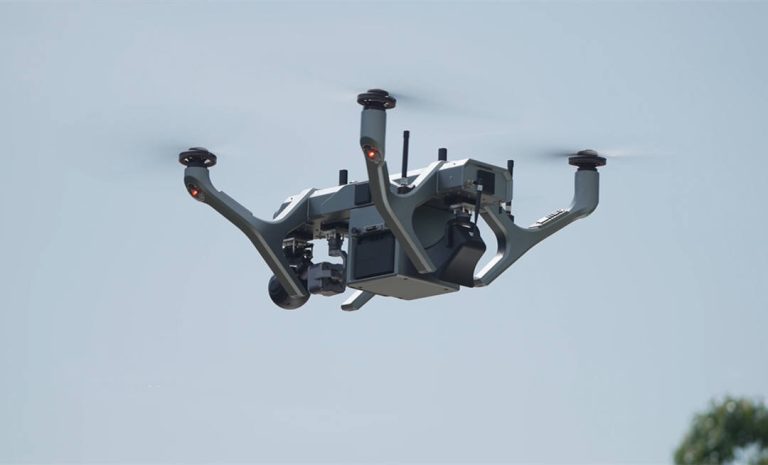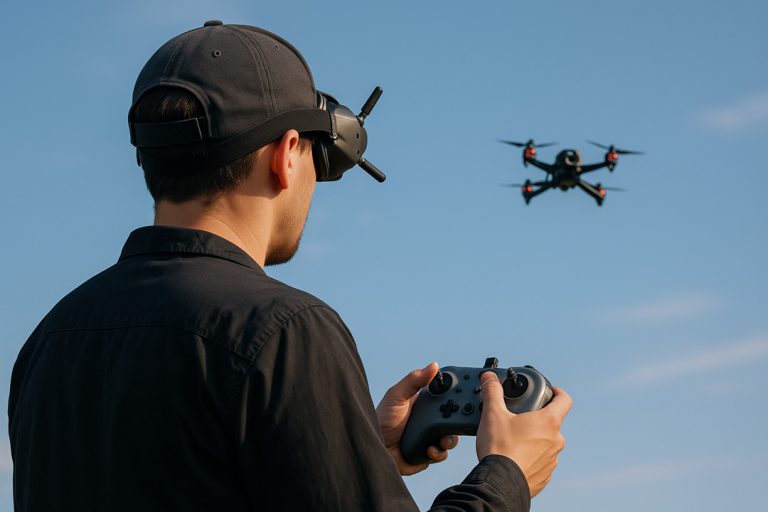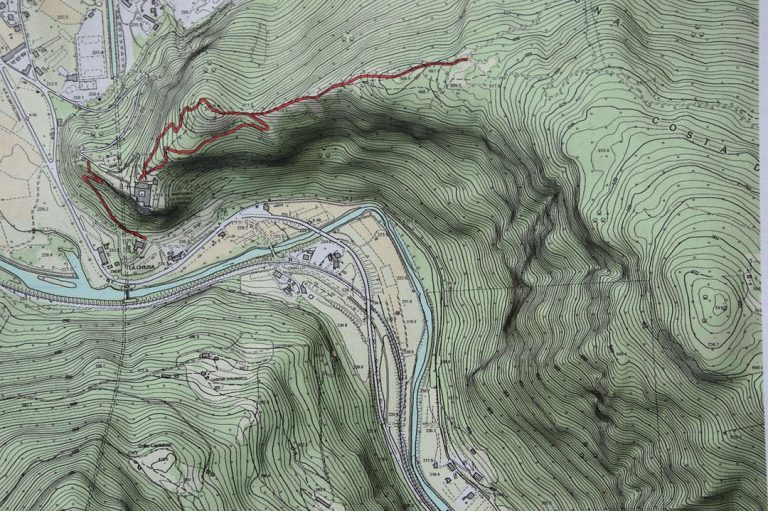What is a Maritime Drone? How is it Being Used?
Maritime drones, also known as sea drones or naval UAVs, have emerged as invaluable assets in various maritime operations. From maritime surveillance and search and rescue missions to surveys and inspections, these drones have become an invaluable asset for professionals and enthusiasts alike.
Are you intrigued by the capabilities of maritime drones and their applications in various industries? If so, you've come to the right place. In this comprehensive article, we'll dive into the world of maritime drones, exploring their applications across different industries and highlighting the top choices in the market.
Let's set sail on this exciting journey of discovery together!
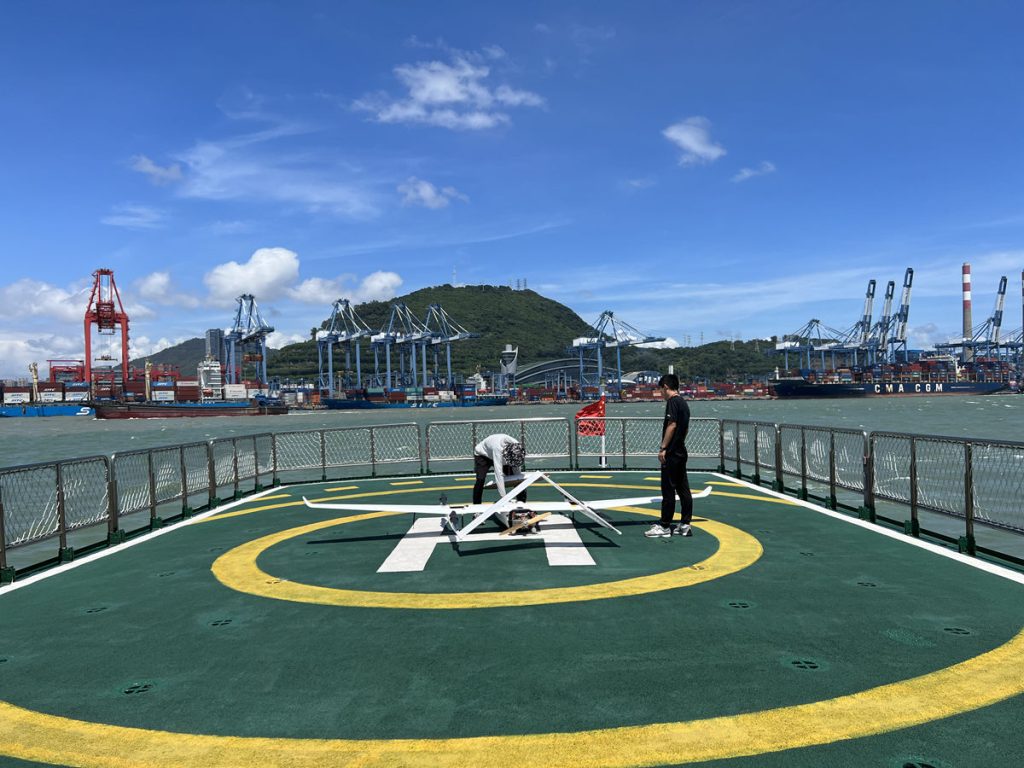
What is a Maritime Drone and How Do They Differ from Traditional Drones?
Let's start with the basics: What exactly is a maritime drone? Simply put, it's an unmanned aerial vehicle (UAV) designed specifically to operate over water. What sets them apart from traditional drones is their durability and specialized features.
These water-friendly wonders are built to withstand the challenges of aquatic environments. With waterproofing, corrosion-resistant materials, and buoyancy systems, they handle splashing waves like a champ.
When it comes to navigation, sea drones are prepared. Equipped with advanced GPS and gyroscopes, they fly steadily over vast water bodies, making them perfect for marine surveillance, research, and search and rescue missions.
Their payloads are tailored for marine tasks too. Think high-resolution cameras, thermal sensors, and even sonar for underwater surveys. While traditional drones are great for land-based missions, maritime drones rule the seas with their unique capabilities.
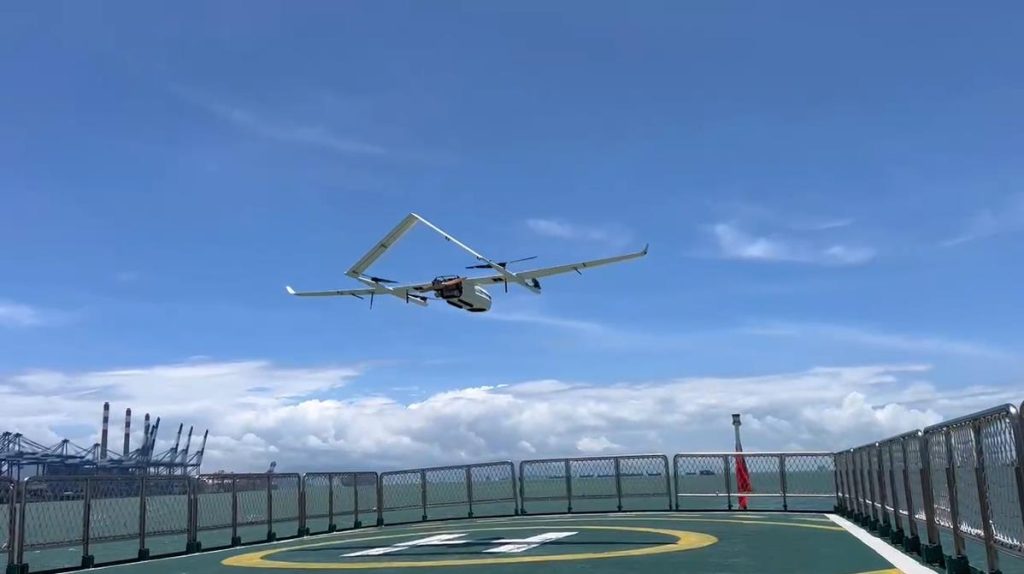
Types of Maritime Drones
Let's explore the different types of drones for maritime use that have revolutionized the way we navigate, patrol, and explore the marine environment.
Surface Drones
Surface drones, also known as boat drones, have become a staple in maritime applications. These unmanned watercraft are built to glide gracefully on the water's surface, offering versatility in various tasks. Whether it's conducting marine research, assisting in search and rescue operations, or even capturing breathtaking footage, surface drones have proven their worth in the maritime domain. They often come equipped with advanced remote control systems, enabling precise maneuvering and seamless operation even from a distance.
Underwater Drones
Unleashing the wonders of the underwater realm, underwater drones have taken exploration to new depths. These submersible marvels also referred to as submaritime drones, are tailor-made for marine surveying, inspection, and environmental research. Armed with high-resolution cameras and sensors, they provide valuable insights into marine ecosystems, shipwrecks, and underwater structures that were once difficult to access. With their agile capabilities and ability to withstand the pressure of deep waters, underwater drones have become an indispensable tool for marine scientists, archaeologists, and explorers.
Hybrid Drones
Hybrid drones combine the capabilities of both surface and underwater drones, making them versatile tools for maritime exploration and research. These drones can seamlessly transition between operating on the water's surface and submerging beneath, offering users a comprehensive view of both worlds. Hybrid drones are particularly useful for marine biologists, oceanographers, and environmentalists, as they allow for a more holistic understanding of marine ecosystems and habitats.
Airborne Drones
While airborne drones are not directly associated with the maritime environment, they play a significant role in supporting maritime operations. Equipped with long-range capabilities and high-resolution cameras, airborne drones are used for aerial surveillance of maritime activities, coastal monitoring, and search and rescue missions. These drones can cover vast distances, making them invaluable assets for tracking vessels, monitoring marine pollution, and responding to emergencies at sea.
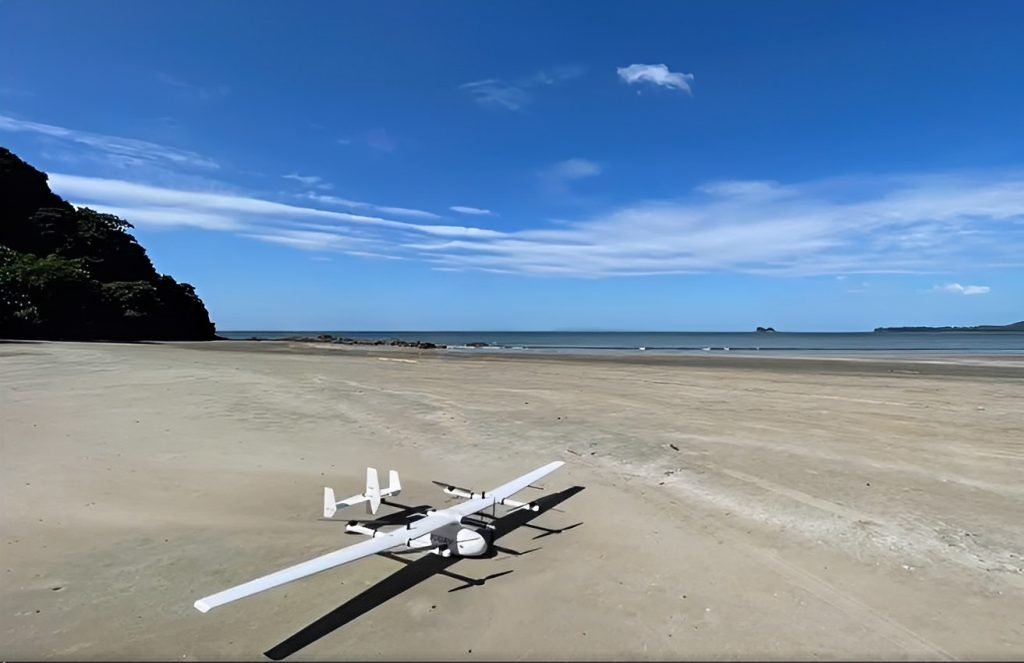
What are the Benefits of Drone Technology in the Maritime Industry?
Naval UAVs are equipped with advanced technology that enhances efficiency, safety, and data collection capabilities. Let's explore the advantages of utilizing drone technology in the maritime sector.
Enhanced Safety
One of the most significant advantages of maritime drones is their ability to perform hazardous tasks without risking human lives. In challenging conditions such as storms or rough seas, sending drones to carry out inspections, surveillance, or search and rescue operations proves to be safer and more efficient than exposing human personnel to potential dangers.
Cost-Effectiveness
Maritime operations often involve significant expenses related to manpower and equipment. By employing drones, the maritime industry can reduce operational costs significantly. Drones can cover vast areas in a short amount of time and are relatively less expensive to maintain compared to traditional methods, resulting in substantial cost savings over time.
Rapid Search and Rescue Operations
In emergency situations, time is of the essence. Maritime drones can swiftly cover large expanses of water, expediting search and rescue operations. Their ability to reach remote or hazardous locations ensures a quicker response, potentially saving lives.
Efficient Surveys and Inspections
Traditional maritime surveys and inspections can be time-consuming and costly. However, with the aid of naval UAVs, these tasks can be completed more efficiently. Drones equipped with high-resolution cameras and sensors can capture detailed images and videos of vessels, offshore structures, and coastal areas. This enables faster and more accurate assessments of maintenance needs, structural integrity, and environmental conditions.
How are Drones Used in the Maritime Industry?
Ocean drones have opened up a myriad of applications, ranging from surveillance and search-and-rescue missions to marine inspections and surveying. Let's delve into the various roles these drones play in the maritime domain.
Maritime Patrol and Surveillance
Maritime patrol drones have become a game-changer in enhancing security and monitoring vast stretches of the ocean. Equipped with high-resolution cameras and infrared sensors, these drones aid in detecting illegal activities, such as smuggling and unauthorized fishing, ensuring the safety and security of maritime borders and waters.
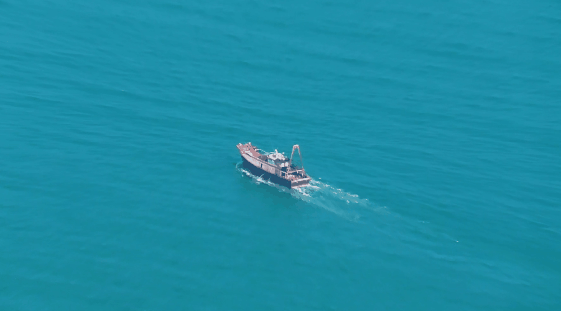
Search and Rescue
When it comes to saving lives at sea, maritime search and rescue drones prove to be invaluable assets. With their ability to cover large areas quickly, these aerial devices can locate distressed vessels or individuals in emergency situations. They provide real-time visuals and coordinates to rescue teams, expediting the response time and increasing the likelihood of successful operations.
Maritime Survey and Inspections
The use of drones for maritime surveying and inspections has significantly streamlined these processes. Drones equipped with high-resolution cameras and LiDAR technology can capture detailed images and collect data on maritime infrastructure, such as ports, bridges, and offshore platforms. These inspections are conducted safely and efficiently, reducing costs and minimizing human risk.
Environmental Conservation
Preserving marine ecosystems is a global priority, and maritime drones play a crucial role in this endeavor. These drones facilitate environmental monitoring, allowing researchers and conservationists to assess water quality, detect oil spills, monitor wildlife, and track changes in marine habitats. This data-driven approach helps in implementing proactive conservation measures and mitigating the impact of human activities on the marine environment.
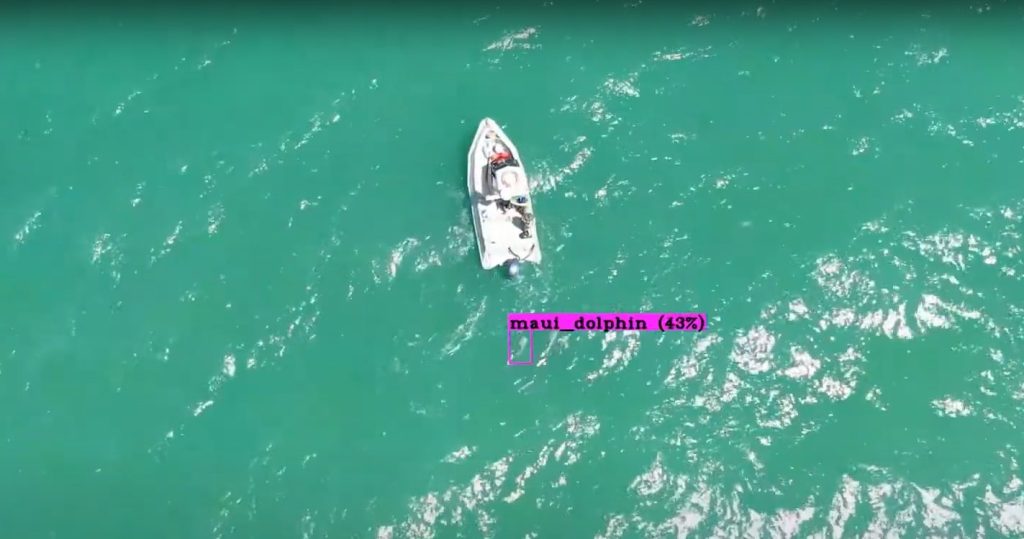
Sailing and Recreational Use
Beyond professional use, drones also find their way into the hands of sailing enthusiasts. The best drones for sailing offer breathtaking aerial footage of sailing adventures, capturing unforgettable moments on the water and providing a unique perspective for sailors to relive their experiences.
When choosing a sea drone, consider the following specific parameters to ensure you find the best-suited option for your needs:
Water and Weather Resistance: Since maritime operations involve exposure to saltwater and unpredictable weather conditions, it's crucial to pick a drone with excellent water and weather resistance. Look for drones with a high IP rating, ensuring they can handle splashes, rain, and even temporary immersion without compromising functionality.
Range and Endurance: Opt for a drone with a minimum flight range of 5 kilometers and a flight time of at least 30 minutes to allow for extended coverage and data collection.
Remote Control Range: Choose a drone with a remote control range of at least 2 kilometers to ensure better control and monitoring capabilities.
Camera and Sensor Capabilities: Prioritize drones with a 4K or higher resolution camera, gimbal stabilization, and specialized sensors such as thermal imaging or multispectral sensors for accurate data collection.
Real-Time Data Transmission: Prioritize drones that support real-time data transmission and live video feed to facilitate prompt decision-making during surveillance or search-and-rescue operations.
GPS and Navigation Systems: Ensure the drone has a reliable GPS system with RTK capability for precise positioning during surveys and mapping.
By carefully evaluating these specific parameters and following the outlined directions, you'll be well-equipped to choose the best maritime drone for your intended applications, ensuring successful and efficient operations in the maritime industry.
Best Maritime Drone (2023 Guide & Review)
In this section, we'll explore some of the best maritime drones available on the market and delve into their specific parameters and features to help you make an informed choice.
JOUAV CW-15 - Best Maritime Drone for Surveillance
If you need top-notch surveillance capabilities, the JOUAV CW-15 is your go-to maritime drone. With an impressive maximum flight time of 180 minutes, a cruising speed of 61.2 km/h, and a video transmission range of 50 km, it offers extensive coverage for your maritime operations.
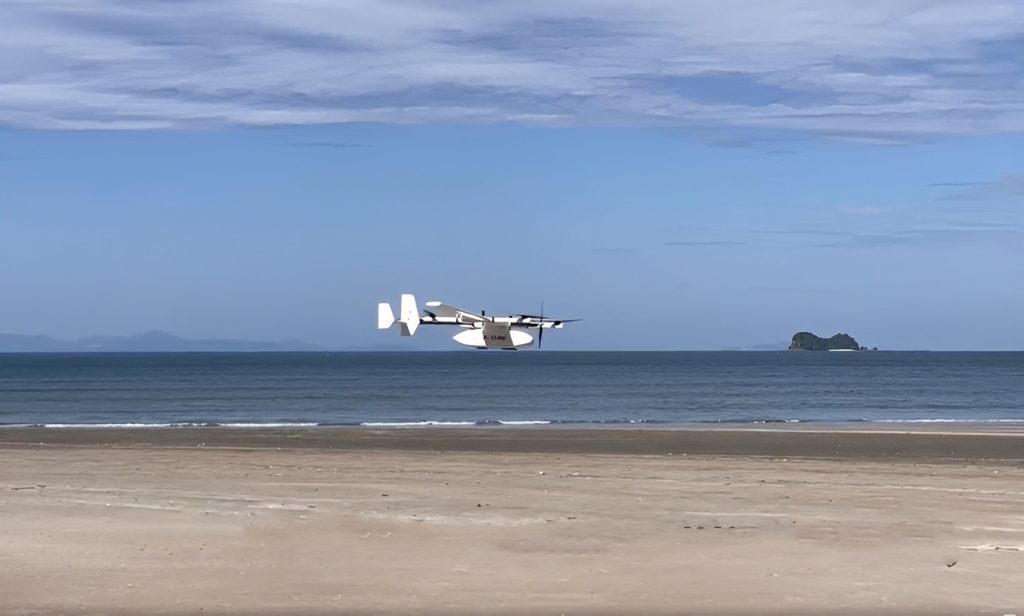
The dual gimbal camera, combining a 30x zoom optical camera and 640*512 infrared sensor, backed by AI recognition and tracking, ensures crystal-clear real-time video streaming. The open architecture and unified application control development interface allow for user-defined load application development.
Additionally, its RTK and PPK features, along with forward- and downward-looking millimeter-wave radar (MWR) and ADS-B module, provide excellent precision and awareness. Whether for surveillance or or any other maritime applications, this VTOL drone is a reliable and intelligent maritime drone.
- Max flight time: 180min
- Cruising speed: 61.2km/h
- Video transmission range: 50km
- Max Payload: 3kg
- Max wind resistance speed:10.8-13.8m/s
- Waterproof rating: light rain and light snow (rainfall ≤ 10mm/24h)
- RTK and PPK
- Precisely takeoff and land from moving vessels
JOUAV CW-25 - Best Marine Biology Drone
For marine biologists and researchers, the JOUAV CW-25 is a dream come true. With an extended flight time of 330 to 360 minutes and a cruising speed of 82.8 km/h, this drone allows for prolonged and swift data collection over vast marine territories. The impressive video transmission range of 200 km ensures that you can study remote marine ecosystems without limitations.
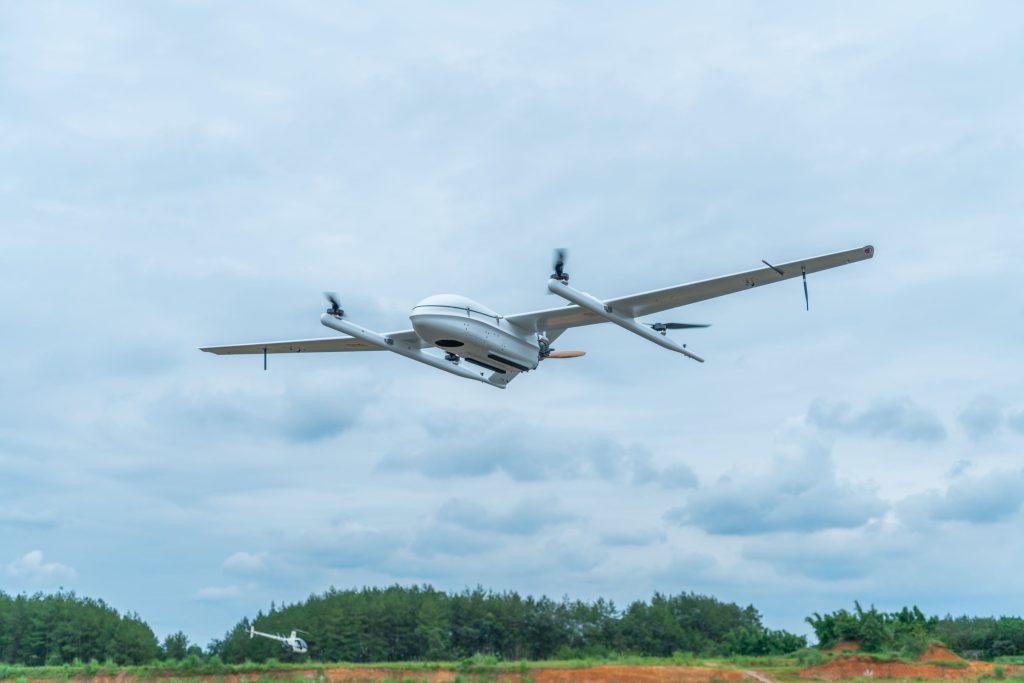
Featuring the MG-120E gimbal camera with a 30x zoom optical camera, a 640*512 infrared sensor, and AI recognition and tracking, the CW-25 empowers marine biologists to study marine life in incredible detail. The inclusion of RTK and PPK technology, forward- and downward-looking millimeter-wave radar, and an ADS-B module ensures the drone's reliability and safety during challenging field missions.
The CW-25's ability to perform precise takeoff and landing from moving vessels opens up new avenues for marine exploration. Its heated drain-type airspeed tube safeguards against adverse weather, allowing researchers to operate the drone efficiently in varying environmental conditions.
- Max flight time: 330-360min
- Cruising speed: 82.8km/h
- Video transmission range: 200km
- Max Payload: 6kg
- Max wind resistance speed:13.9-17.1m/s
- Waterproof rating: light rain and light snow (rainfall ≤ 10mm/24h)
- RTK and PPK
- Precisely takeoff and land from moving vessels
JOUAV CW-007 - Best Maritime Survey Drones
If you need a reliable RTK drone for maritime surveying tasks, the JOUAV CW-007 is an excellent choice. With a maximum flight time of 70-90 minutes, this survey drone provides ample time to complete your survey missions efficiently. The cruising speed of 61.2 km/h allows for rapid data collection over large survey areas.
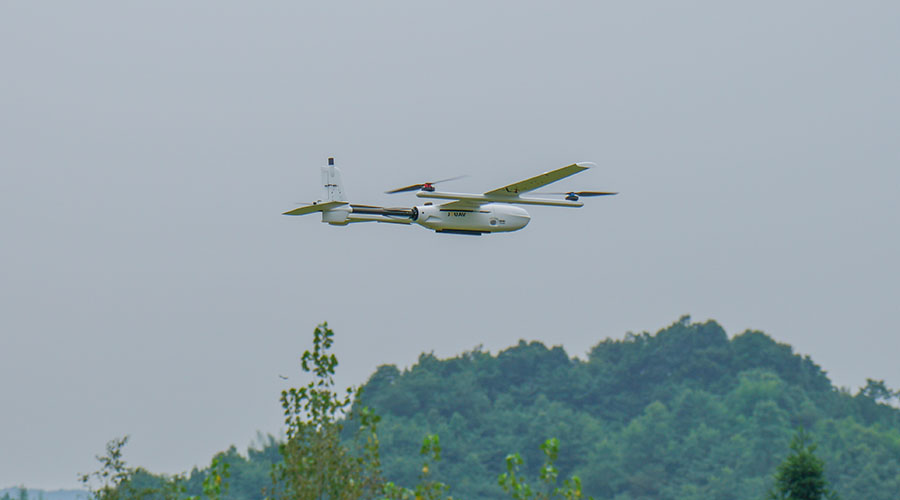
The most remarkable feature of the JOUAV CW-007 is its exceptional survey efficiency. In a single flight, it can cover an impressive 4 km² of 1:500 scale, 6 km² of 1:1000 scale, or an astonishing 12 km² of 1:2000 scale. This outstanding capability significantly reduces the time and resources required for surveying large areas, making it an invaluable asset for various maritime survey applications.
Thanks to its modular design and backpack size, the CW-007 is incredibly portable and easy to set up or take down in less than 2 minutes. Its fully autonomous functions, including one-button take-off and landing with landing accuracy within 10cm, make it user-friendly and safe to operate.
- Max flight time: 70-90min
- Cruising speed: 61.2km/h
- Video transmission range: 30km
- Max Payload: 1kg
- Max wind resistance speed:10.8-13.8m/s
- Waterproof rating: light rain and light snow (rainfall ≤ 10mm/24h)
- RTK and PPK
JOUAV PH-7E - Best Maritime Search and Rescue Drone
For search and rescue operations at sea, the JOUAV PH-7E is a top-notch choice. With a maximum flight time of 63 minutes and a cruising speed of 72 km/h, this thermal drone can swiftly cover large search areas and reach those in need promptly.
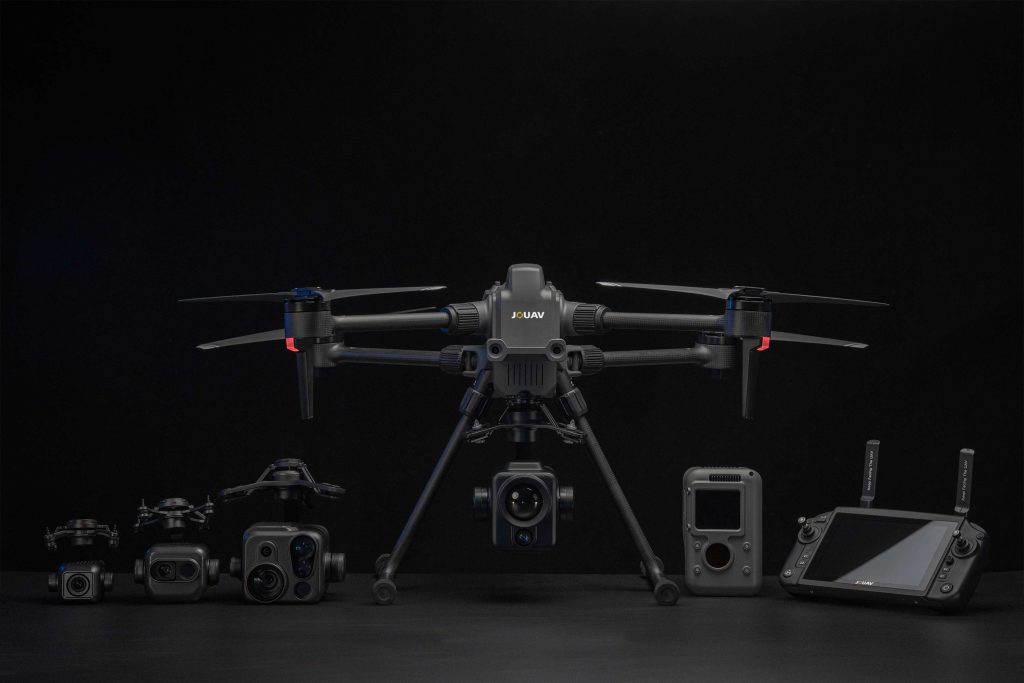
The PH-7E is equipped with a powerful 1k thermal camera with 1280*1024 effective infrared pixels and a wide field of view, making it highly effective in spotting individuals or vessels in distress. The real-time video streaming capabilities further aid in seamless coordination during search and rescue missions.
Its 21TOPS computing power enables advanced features like power defect recognition and human face recognition, adding a layer of intelligence to the drone's search capabilities. Additionally, the inclusion of millimeter-wave radar (MWR) and visual obstacle avoidance ensures safe navigation in challenging environments.
- Max flight time: 63min
- Cruising speed: 72km/h
- Max Payload: 3kg
- Max wind resistance speed:12.5m/s
- Waterproof rating: IP45
- Portable and backpack size
- 1k thermal camera with 1280*1024 effective infrared pixel
How Much Does a Maritime Drone Cost?
When it comes to the price of drones for maritime use, it's essential to consider different types of drones and their respective prices. Generally, the prices can range anywhere from $1,000 to $100,000 or even more, depending on the drone's size, capabilities, and intended applications.
Small consumer-grade maritime drones, commonly used for recreational purposes and basic monitoring, typically fall in the lower price range, ranging from $1,000 to $5,000. These drones are accessible to hobbyists and can be useful for simple observations in marine environments.
As we move up the scale to more advanced professional drones designed for scientific research, marine conservation, and commercial operations, the costs increase substantially. These high-end drones can range from $10,000 to $50,000, offering improved durability, specialized sensors, longer flight times, and enhanced data collection capabilities.
For large-scale industrial and research applications, such as oceanographic studies, marine surveys, and offshore inspections, the most sophisticated maritime drones can reach prices of $100,000 or more. These drones boast cutting-edge technology, long-range capabilities, and the ability to withstand harsh marine conditions.
Maritime Drone Laws and Regulations
Operating maritime drones involves adhering to important laws and regulations. Here are key points to consider:
Registration: In many countries, maritime drones must be registered with aviation authorities. Follow the registration process and display the unique number on the drone as required.
Operator Certification: Depending on the purpose of your drone operations, you may need certifications or licenses. Commercial operators often require a Remote Pilot Certificate or similar qualification.
Restricted Airspace and No-Fly Zones: Certain areas, such as military installations and airports, are restricted or designated as no-fly zones. Familiarize yourself with these areas to avoid violations.
Flight Restrictions and Altitude Limits: Countries have set altitude limits for drone operations to ensure airspace safety. Know the limits specific to maritime drones in your region and comply accordingly.
Privacy and Data Protection: Respect privacy regulations when operating drones with cameras or data-capturing devices. Follow laws regarding the collection, storage, and use of personal data.
Safety Guidelines: Follow general safety guidelines, such as maintaining a visual line of sight, avoiding crowded areas, and conducting pre-flight checks. Adhering to these guidelines promotes safe operations.
Remember, drone regulations can vary by country and jurisdiction, so consult the specific regulations applicable to your location.
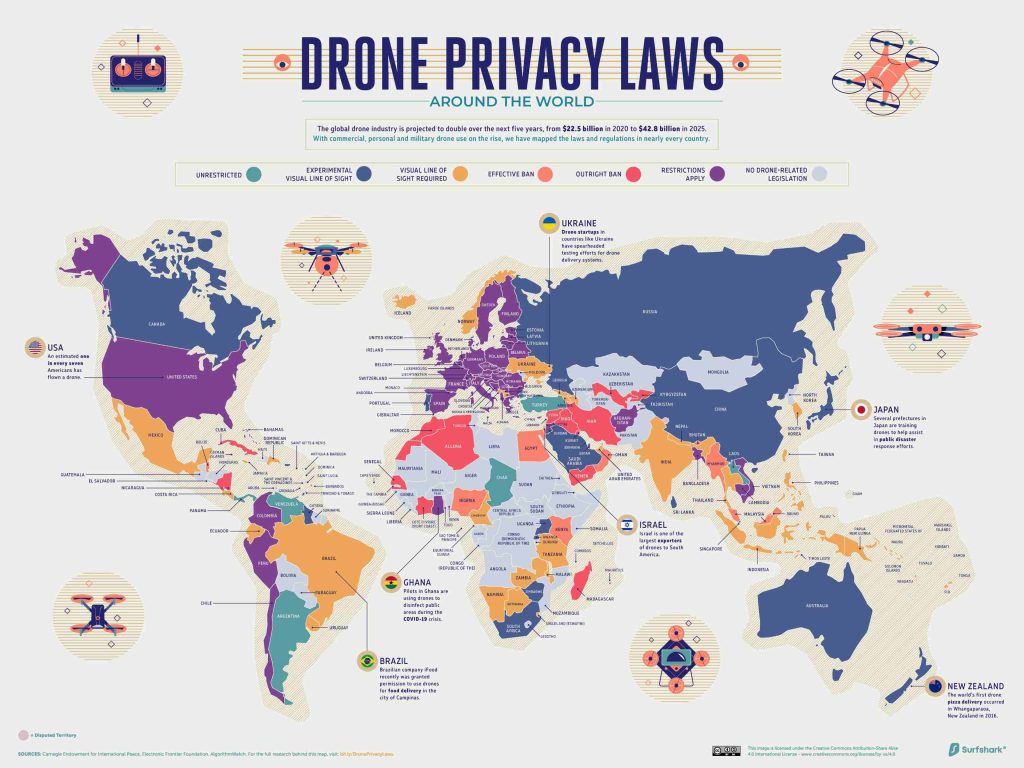
Source from surfshark.com
Future Trends and Innovations in Maritime Drones
The world of maritime drones is continuously evolving, driven by advancements in technology and the growing demand for efficient and sustainable solutions. As the potential of these drones expands, several exciting trends and innovations are shaping the future of maritime operations.
Increased Autonomy: Future sea drones will incorporate more advanced AI and machine learning algorithms, enabling them to operate autonomously for extended periods. This will enhance their ability to carry out complex missions with minimal human intervention.
Swarm Technology: Swarm-enabled maritime drones, operating collaboratively, will become more prevalent. Swarm technology allows multiple drones to work together, increasing coverage and efficiency in tasks like search and rescue or marine research.
Extended Range and Endurance: Innovations in battery technology and power management will lead to longer flight times and extended operational ranges, enabling maritime drones to cover larger areas and conduct more extended missions.
Enhanced Payloads: Maritime drones will be equipped with increasingly sophisticated payloads, including advanced sensors, hyperspectral imagers, and improved communication systems. These advancements will elevate the quality and accuracy of data collected during missions.
Climate Monitoring and Research: With growing concerns about climate change, maritime drones will play a vital role in monitoring and researching marine ecosystems, sea ice, and other indicators of environmental health.
Collaborative Research Projects: Academic institutions, environmental organizations, and industry stakeholders will collaborate more extensively in using maritime drones for scientific research and conservation efforts.
As technology continues to progress, the potential applications of maritime drones will expand, fostering innovation and transformative solutions across various industries.
FAQ
What are Drones Used for in Marine Biology?
Scientists and researchers utilize drones to gather data and study marine environments more efficiently and effectively. Here are a few specific applications of drones in marine biology:
Aerial surveys: Mapping drones equipped with high-resolution cameras or sensors can capture aerial imagery or collect data from above, allowing researchers to monitor and analyze marine life populations, such as migratory patterns of marine mammals or the distribution of seabird colonies.
Marine mammal research: Drones equipped with specialized sensors, such as thermal cameras or hydrophones, can help monitor and study marine mammals, including whales, dolphins, and seals. They enable researchers to gather data on behavior, population density, and acoustic communication.
Habitat monitoring: Drones equipped with multispectral or hyperspectral cameras can assess the health of coastal ecosystems, such as coral reefs or seagrass beds. This data can help scientists monitor changes in habitat conditions and detect potential threats like pollution or bleaching events.
Tracking marine species: Drones equipped with GPS tracking systems or radio transmitters can assist in tracking the movements and behavior of marine animals, such as sea turtles or sharks. This information contributes to our understanding of migration patterns, foraging behavior, and habitat usage.
How Much Does Maritime Drone Service Cost?
Factors that influence the cost of maritime drone services include the type of drones used, the complexity of the tasks required, the duration of the service, and the location of the operation. Additionally, the level of expertise and experience of the service provider can also affect the pricing.
On average, basic maritime drone services can start from around $500 to $1,000 per day. This would typically include simple tasks like aerial surveys, basic data collection, and monitoring. For more advanced services, such as high-resolution mapping, inspections, or surveillance, costs can increase to anywhere between $1,500 to $5,000 per day.
For long-term contracts or ongoing services, some providers may offer discounted rates. However, prices can still vary significantly, so it's essential to obtain quotes from multiple companies to find the best deal for your specific needs.



